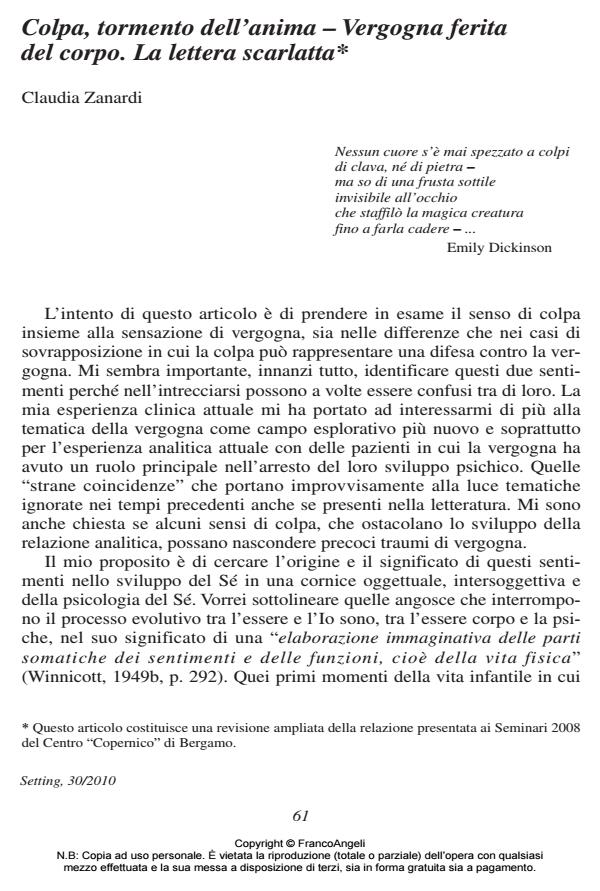Colpa, tormento dell’anima - Vergogna ferita del corpo. La lettera scarlatta
Journal title SETTING
Author/s Claudia Zanardi
Publishing Year 2012 Issue 2010/30
Language Italian Pages 17 P. 61-77 File size 502 KB
DOI 10.3280/SET2010-030003
DOI is like a bar code for intellectual property: to have more infomation
click here
Below, you can see the article first page
If you want to buy this article in PDF format, you can do it, following the instructions to buy download credits

FrancoAngeli is member of Publishers International Linking Association, Inc (PILA), a not-for-profit association which run the CrossRef service enabling links to and from online scholarly content.
The article takes in consideration the feelings of guilt and shame in a relational theory framework, identifying their difference and their occasional intertwining. The origin of the guilt feeling is traced back to the infant’s primary anxiety perceived in the birth trauma, the separation/death from the mother. The infant’s anxiety could find afterwards, in the lack or fragility of the maternal container, a representation in the feeling of guilt. This feeling could allow a structure of the self as a subject able to keep an object relation, even if the object is absent/destroyed, avoiding the disintegration of the self. The feeling of shame is analyzed, in the framework of different theories, as rooted in an early trauma, a humiliating look or act, that has interrupted the psychic development of an undifferentiated self, dissociating one part of the self that remains unknown. This dissociation of the Self makes the person emotionally isolated preventing any relation with the other. Some clinical examples are illustrated together with a reareading of Hawthorne’s novel, The scarlett letter, that gives a literary representation of shame and guilt.
Claudia Zanardi, Colpa, tormento dell’anima - Vergogna ferita del corpo. La lettera scarlatta in "SETTING" 30/2010, pp 61-77, DOI: 10.3280/SET2010-030003